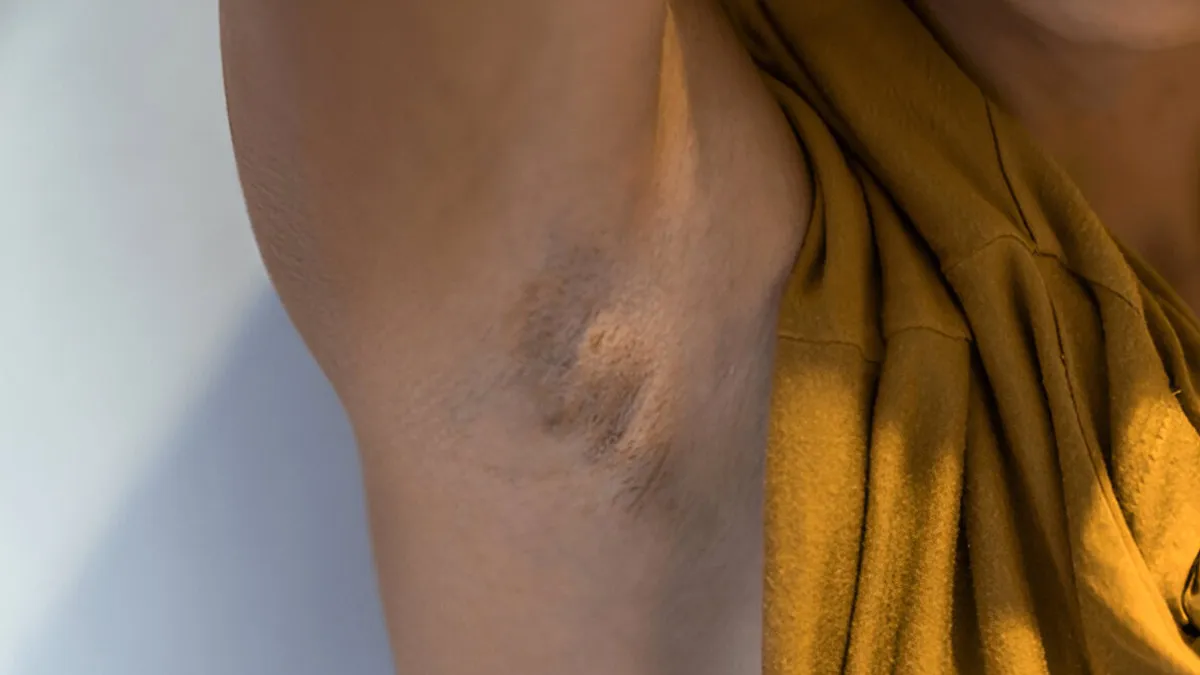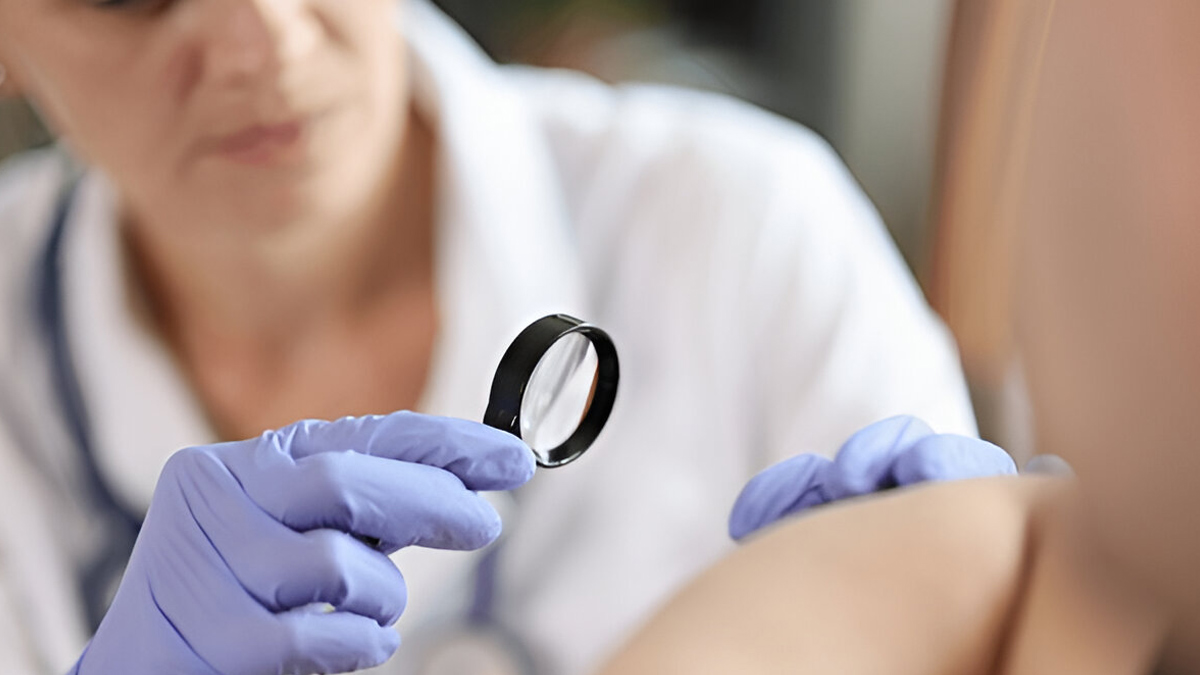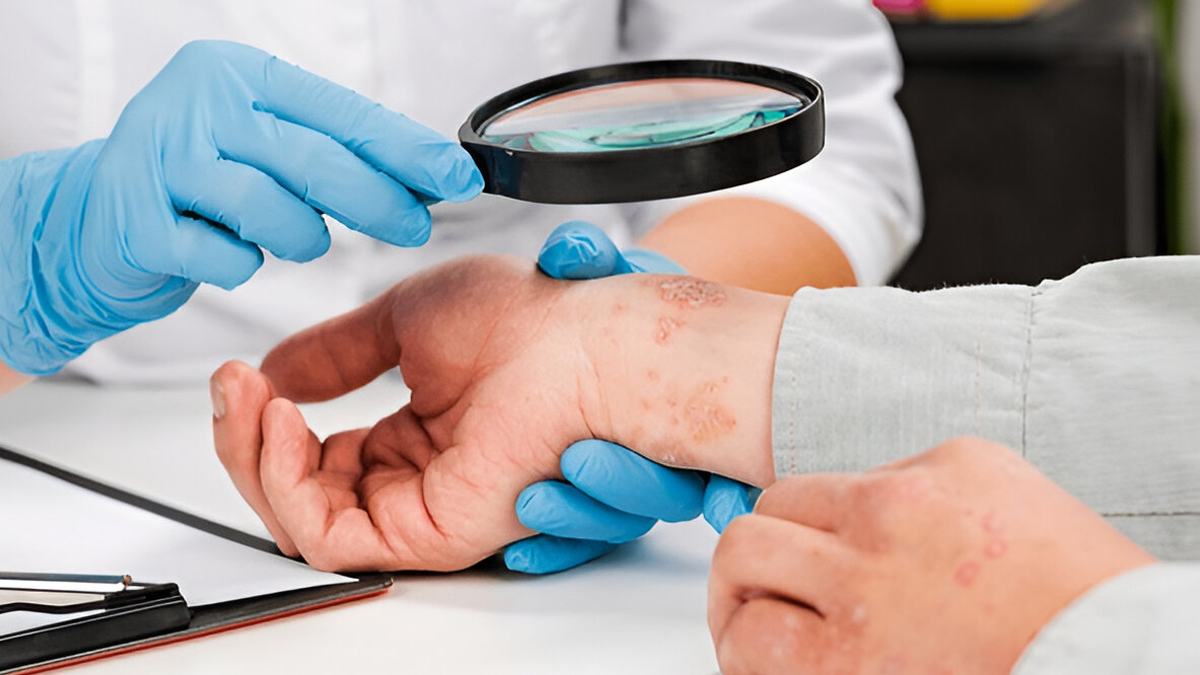
Ever had small, painful lumps that form under the skin? Did you think they were pimples and waited for them to resolve on their own? That could be the case, unless they only heal slowly, recur, and lead to tunnels under the skin. This type of skin condition can be more than just a regular pimple. It could be hidradenitis suppurativa, a skin condition also known as acne inversa.
Table of Content:-
If this condition is new to you, here's everything you need to know about it.
What Is Hidradenitis Suppurativa?

In an interaction with the OnlyMyHealth team, Dr Sheetal Poojary, Consultant Dermatologist, K J Somaiya Hospital and Research Centre, Mumbai, describes hidradenitis suppurativa as a chronic inflammatory condition majorly affecting fold areas, such as armpits, groin areas, and sometimes even buttock and inframammary areas. "They present as inflammatory boils and abscesses which later form sinuses and scarring," she adds.
Also Read: Can Your Mental State Trigger Skin Flare-Ups? Dermat Tells
According to the doctor, the skin condition is recurrent and chronic and can coexist with severe acne. It is caused by follicular occlusion, which refers to blockage of hair follicles, often due to a buildup of keratin (scale).
According to StatPearls Publishing, hidradenitis suppurativa is estimated to have a prevalence ranging from under 1% to 4%. The condition's onset is commonly between puberty and 40 years, most frequently from ages 21 to 29. Research also notes that women are about three times more affected by hidradenitis suppurativa than men.
Common Characteristics Of Hidradenitis Suppurativa

Hidradenitis suppurativa is characterised by painful, boil-like lumps under the skin, primarily in areas where skin rubs together. These lumps can progress into abscesses that drain pus and eventually lead to scarring.
The condition is recurrent, meaning symptoms can flare up and subside over time.
‘Obesity Is A Major Contributing Factor’
According to Dr Poojary, several factors play a role in the pathogenesis of hidradenitis suppurativa, primarily genetic factors, obesity, and hormonal factors. "Obesity is a major contributory factor, as it causes friction and increases sweat production and follicular occlusion.
Smoking is also a known trigger, she adds.
Diagnosis is mostly clinical. "Occasionally, biopsy and culture of tissue/fluid may be required to rule out infective conditions."
How To Manage Hidradenitis Suppurativa

Early cases and flare-ups of hidradenitis suppurativa can be managed with oral antibiotics and anti-inflammatory agents. More severe cases are treated with biological agents. “Hormonal treatment can be given to patients with known hormonal imbalances, whereas procedural treatment in the form of laser hair removal can help in hair reduction at the site and, thereby, reduction of symptoms,” shares Dr Poojary.
Also Read: Is That A Fungal Patch Or Just Hyperpigmentation? Simple Ways To Manage Both
Very severe, recalcitrant cases may require surgical excision of the entire affected area followed by skin grafting.
Severe cases of hidradenitis suppurativa can also impair the quality of life of patients, as the discharge can stain clothes, causing social embarrassment. Severe cases may even impair mobility when groins are involved. A psychologist’s help can be taken to manage such psychological distress.
Conclusion
Hidradenitis suppurativa is a condition that causes painful lumps under the skin, especially in the areas where the skin rubs together. They may often be mistaken for pimples; however, the key difference is that they can be recurrent and form tunnels under the skin. If you notice such symptoms, it is crucial to consult a dermatologist, and one must also seek a psychologist’s guidance, especially when the skin condition starts causing mental distress.
Also watch this video
How we keep this article up to date:
We work with experts and keep a close eye on the latest in health and wellness. Whenever there is a new research or helpful information, we update our articles with accurate and useful advice.
Current Version